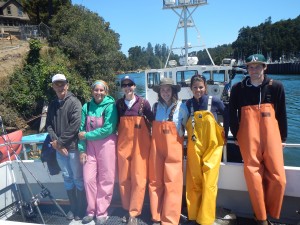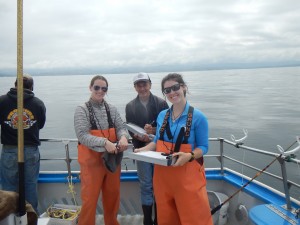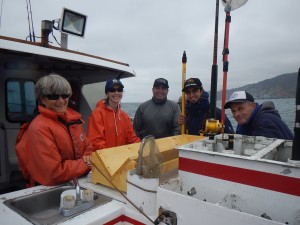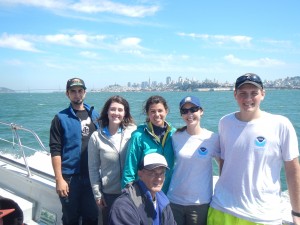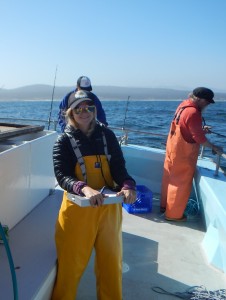About us
We are researchers, students and volunteers from UC Santa Cruz with an interest in promoting sustainable fisheries by studying best-practice release techniques for rockfish. This project was funded by the NOAA Fisheries’ Bycatch Reduction Engineering Program which supports the development of technological solutions and changes in fishing practices designed to minimize bycatch. Their mission is to find creative approaches and strategies for reducing bycatch, seabird interactions, and post-release mortality in federally managed fisheries.
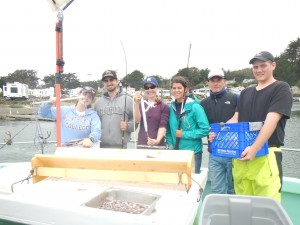
Bodega Bay science crew showing off the different descending devices. From left: Morgan, Kevin, Sabrina, Jordan, Dave and Thomas.
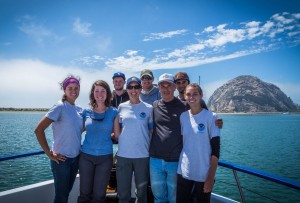
Morro Bay science crew. From left front: Jordan, Morgan, Sabrina, Dave and Kristi, From left back: Alex, Nick and Kevin.
Many thanks to our partners!
NOAA Southwest Fisheries Science Center (Santa Cruz and La Jolla labs)
California Department of Fish and Wildlife
Sportfishing Association of California
Humboldt Area Seawater Anglers (HASA)
California Collaborative Fisheries Research Program, Moss Landing Marine Labs
Applied Marine and Watershed Science Program, California State University Monterey Bay
RC Lab, University of California Santa Cruz
Captains and crew of our CPFV charters
Our awesome volunteer anglers!
Science Team
Project Lead: Sabrina Beyer (UCSC/ NOAA Affiliate)
NOAA Advisors: Susan Sogard, Rosemary Kosaka, Cindy Thompson
UCSC Advisor: Mark Carr
Technician: Morgan Arrington (UCSC/ NOAA Affiliate)
Masters Student: Jordan Maeding (CSUMB)
NOAA Corps: Cherisa Friedlander
Student interns: Kristi Craig, Emily Chortek, Michael Miguire, Alex McCutcheon, Kevin Shiraz, Thomas Adams, Kimberli Boone, Kim Pham
Volunteers: Dave Kammerer, Danielle Duncan, Nick Ingram
A special thanks to Caroline McKnight and staff at the California Department of Fish and Wildlife
Contact: sbeyer@ucsc.edu
website: sabrinabeyer.com
The University of California, Santa Cruz received received funding for this project under award NA14NMF4720316 from the NOAA Fisheries Service, in cooperation with the Bycatch Reduction Engineering Program. The statements, findings, conclusions, and recommendations are those of the author(s) and do not necessarily reflect the views of NOAA Fisheries.
You are welcome to use our photos for outreach and education purposes, please credit: UCSC Barotrauma Project
